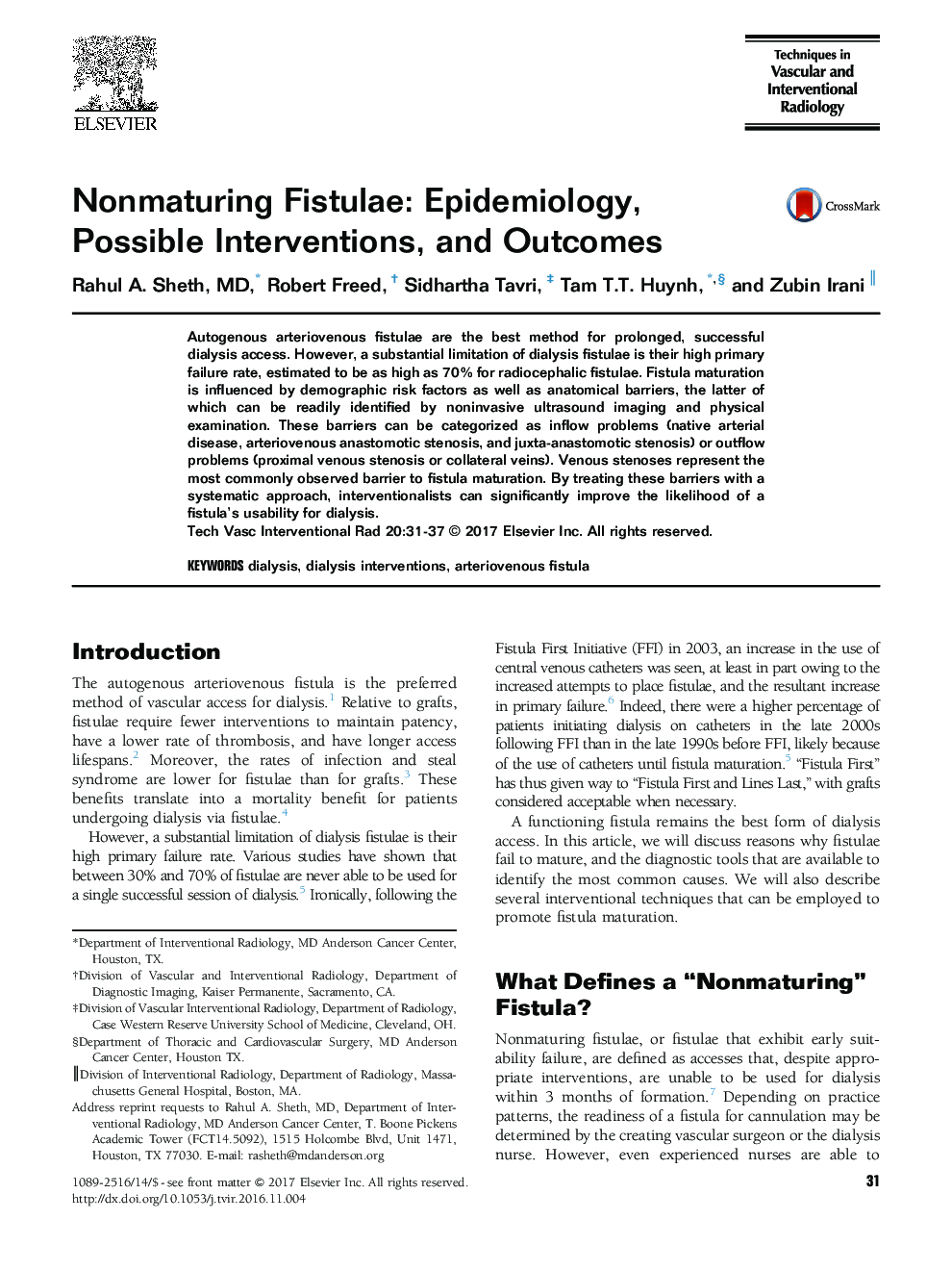| Article ID | Journal | Published Year | Pages | File Type |
|---|---|---|---|---|
| 5728428 | Techniques in Vascular and Interventional Radiology | 2017 | 7 Pages |
Autogenous arteriovenous fistulae are the best method for prolonged, successful dialysis access. However, a substantial limitation of dialysis fistulae is their high primary failure rate, estimated to be as high as 70% for radiocephalic fistulae. Fistula maturation is influenced by demographic risk factors as well as anatomical barriers, the latter of which can be readily identified by noninvasive ultrasound imaging and physical examination. These barriers can be categorized as inflow problems (native arterial disease, arteriovenous anastomotic stenosis, and juxta-anastomotic stenosis) or outflow problems (proximal venous stenosis or collateral veins). Venous stenoses represent the most commonly observed barrier to fistula maturation. By treating these barriers with a systematic approach, interventionalists can significantly improve the likelihood of a fistula's usability for dialysis.
